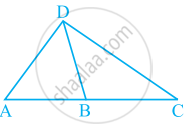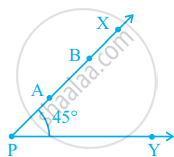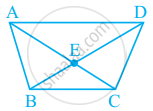Advertisements
Advertisements
Question
What conclusion can be drawn from part of given figure, if DB is the bisector of ∠ADC?
Solution
If DB is the bisector of ∠ADC, then ∠ADB = ∠CDB.
Because an angle bisector bisects an angle into two equal angles.
APPEARS IN
RELATED QUESTIONS
Complete of the following, so as to make a true statement:
The number of pairs of adjacent angles of a quadrilateral is .......
Complete the following statement by means of one of those given in brackets against each:
If in a quadrilateral only one pair of opposite sides are parallel, the quadrilateral is ................
Complete the following statement by means of one of those given in brackets against each:
A line drawn from the mid-point of one side of a triangle .............. another side intersects the third side at its mid-point.
If ABCD is a rectangle with ∠BAC = 32°, find the measure of ∠DBC.
ABCDE is a regular pentagon. The bisector of angle A of the pentagon meets the side CD in point M. Show that ∠AMC = 90°.
In a quadrilateral ABCD, AO and BO are bisectors of angle A and angle B respectively. Show that:
∠AOB = (∠C + ∠D)
One angle of a pentagon is 160° and the rest are all equal angles. Find the measure of the equal angles.
In figure, if point A is shifted to point B along the ray PX such that PB = 2PA, then the measure of ∠BPY is ______.
In given figure, What is AC – EC?
Can we have two obtuse angles whose sum is an acute angle? Why or why not?
